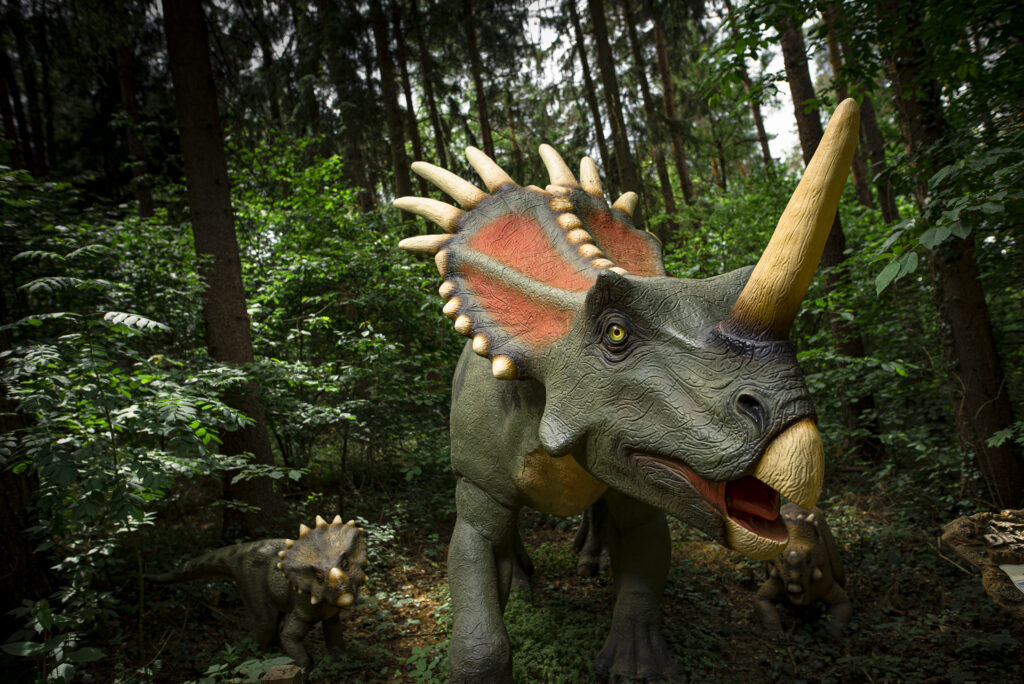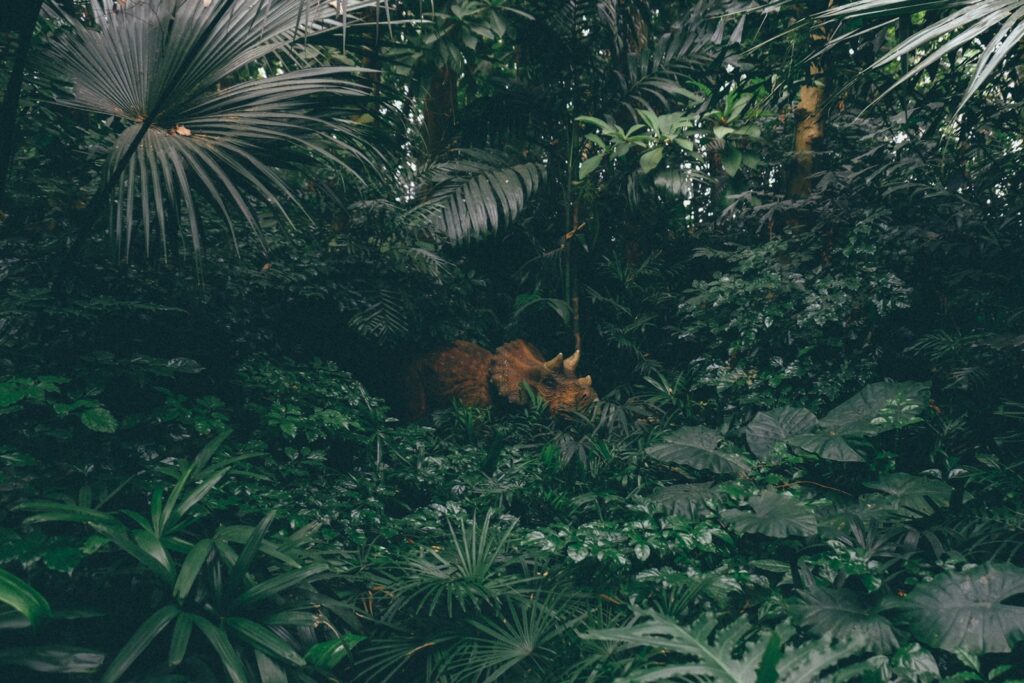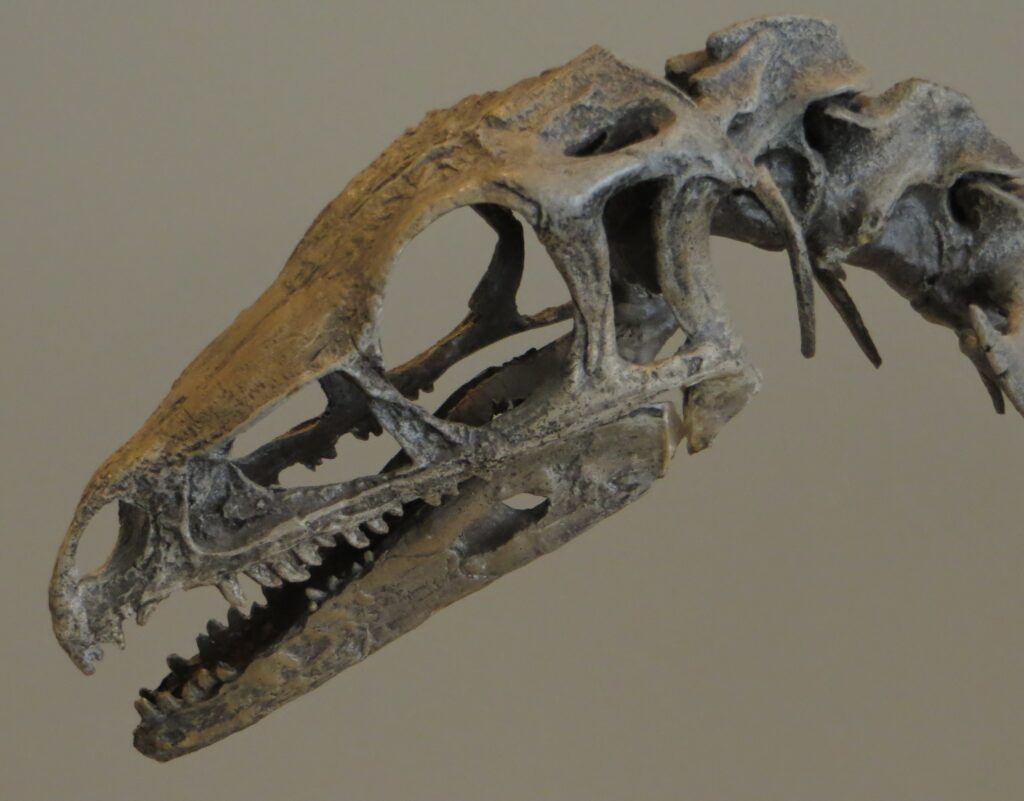The relationship between predator and prey represents one of nature’s most fundamental dynamics—an evolutionary arms race spanning millions of years. Herbivores, despite their plant-based diets, have never lived in peaceful garden paradises. Instead, they’ve evolved in ecosystems teeming with carnivores seeking their next meal. From the smallest insects to massive elephants, plant-eaters have developed remarkable adaptations to survive in a world where danger lurks behind every tree and rock. Their success is evidenced by their abundance across Earth’s various biomes, testament to the effectiveness of their survival strategies. This article explores the fascinating ways herbivores have adapted to navigate a planet where being eaten is a constant threat, and how these adaptations have shaped both their physical forms and behaviors.
The Evolutionary Arms Race

The relationship between herbivores and their predators exemplifies one of evolutionary biology’s most compelling narratives: the predator-prey arms race. As predators evolved more effective hunting strategies, herbivores responded with increasingly sophisticated defenses, creating a continuous cycle of adaptation and counter-adaptation. This dynamic has been playing out for hundreds of millions of years, driving species diversification and ecological complexity across the planet. Fossil records reveal how ancient herbivores developed thicker hides, larger body sizes, and defensive structures like horns and plates in response to predation pressure. This ongoing battle has produced some of the most remarkable adaptations in the animal kingdom, from the towering height of giraffes to the armored shells of tortoises. The evolutionary arms race continues today, though human activities have significantly altered many of these ancient relationships.
Safety in Numbers: The Power of Herds

One of the most effective anti-predator strategies employed by herbivores is the formation of herds, groups, or colonies. Species like wildebeest, zebras, and bison gather in enormous numbers, sometimes in the thousands, creating a bewildering visual effect that makes it difficult for predators to isolate individual targets. Within these social structures, many eyes and ears remain alert for danger, dramatically improving the chances of detecting predators before an attack occurs. When a threat is spotted, alarm calls or visual signals quickly spread through the group, triggering coordinated flight responses. Herding also employs the “dilution effect,” where an individual’s risk of being targeted decreases as group size increases. Studies have shown that animals on the periphery of herds face significantly higher predation rates than those protected in the center, leading to complex social dynamics where position within the group becomes a currency of survival.
Built-in Armor: Physical Defenses

Many herbivores have evolved impressive physical defenses that make them difficult or dangerous to attack. Porcupines represent perhaps the most iconic example, with up to 30,000 sharp quills that detach easily when touched, embedding themselves painfully in a predator’s flesh. Armadillos and pangolins possess overlapping scales or plates that protect vital organs when they roll into a defensive ball. Rhinoceroses develop thick, nearly impenetrable skin that can withstand the claws and teeth of most predators, complemented by formidable horns that can seriously injure attackers. Tortoises and turtles retreat into protective shells that few predators can breach, some species adding hinged plates that completely seal the animal inside its bony fortress. These physical adaptations represent millions of years of evolutionary investment, turning herbivores from easy targets into challenging prey that predators might choose to avoid in favor of less defended alternatives.
Chemical Warfare: Toxic Defenses

Some of the most sophisticated herbivore defenses operate at the biochemical level, with many species developing toxicity as a deterrent against predation. Monarch butterflies, for instance, sequester toxic compounds from the milkweed plants they consume as caterpillars, rendering both larvae and adults unpalatable to most birds and other insectivores. Poison dart frogs, despite being primarily insectivorous themselves, absorb alkaloid toxins from their arthropod prey, developing skin secretions potent enough to kill would-be predators. Many amphibians possess specialized glands that release bitter or toxic substances when threatened, causing predators to quickly release them and learn to avoid similar-looking species in the future. These chemical defenses often pair with aposematic coloration—bright warning patterns that advertise toxicity to potential predators, creating an effective “eat at your own risk” signaling system. The evolution of these toxin-based defenses represents a fascinating case of herbivores repurposing plant defensive compounds for their own protection.
Hiding in Plain Sight: Camouflage and Crypsis

When direct confrontation isn’t viable, many herbivores opt for invisibility through remarkable camouflage adaptations. Leaf insects (Phylliidae) represent perhaps the most extraordinary example, with bodies that mimic specific plant leaves down to apparent damage, veins, and discoloration that make them virtually indistinguishable from actual foliage. Stick insects achieve similar disguise by resembling twigs or branches, complete with knobby growths and gentle swaying movements that mimic plants moving in the breeze. Desert-dwelling herbivores often develop coloration that precisely matches their sandy surroundings, while those in forests typically display disruptive patterns of light and shadow that break up their outlines. Some species take camouflage further through behavioral adaptations, freezing motionless when threats appear or adopting postures that enhance their resemblance to inanimate objects. The effectiveness of these adaptations often depends on remaining perfectly still, as movement quickly betrays even the most perfectly camouflaged animal.
The Art of Deception: Mimicry and Masquerade

Beyond simple camouflage, many herbivores employ sophisticated mimicry to discourage predator attacks. Batesian mimicry occurs when harmless species evolve to resemble dangerous or unpalatable ones, essentially bluffing their way to safety. Many non-venomous butterflies mimic the wing patterns of toxic species, gaining protection without the metabolic cost of producing actual toxins. Some caterpillars develop eyespots and snake-like markings that startle would-be predators into believing they’re facing a dangerous reptile rather than a defenseless insect. Certain moths display markings resembling the face of an owl or hawk when they spread their wings, causing smaller predators to hesitate or retreat. These deceptive strategies exploit predators’ innate wariness around potentially dangerous prey, creating a fascinating example of information warfare in natural ecosystems. The effectiveness of mimicry depends on the relative abundance of models and mimics, with selection pressure maintaining the resemblance across generations.
Run, Hide, or Fight: Behavioral Adaptations

Herbivores employ diverse behavioral strategies to avoid becoming prey, often using decision-making processes refined through natural selection. Species like deer rely on exceptional speed and agility, capable of outrunning most predators in short bursts while employing erratic leaping movements (stotting) that make them difficult to track. Smaller herbivores like rabbits develop intimate knowledge of their territory, creating multiple escape routes and hiding places they can reach within seconds of detecting danger. When flight isn’t possible, some herbivores stand their ground—musk oxen form defensive circles around vulnerable young, while cape buffalo are known to counter-attack lions, sometimes fatally. Many herbivores demonstrate remarkable risk assessment abilities, modifying their behavior based on the specific predator, distance to safety, and their own condition. These behavioral adaptations complement physical and morphological defenses, creating integrated survival strategies that have proven effective across millions of years of predator-prey coevolution.
Vigilance: The Constant State of Awareness

For most herbivores, survival depends on maintaining near-constant vigilance against potential threats in their environment. Many species have evolved specialized sensory adaptations that enhance their predator detection capabilities, such as the laterally positioned eyes of rabbits and deer that provide nearly 360-degree vision. Ungulates like antelope possess extraordinary hearing, with independently mobile ears that can pinpoint sounds from great distances and in multiple directions simultaneously. Prey species typically dedicate significantly more time to scanning for predators than their carnivorous counterparts, with studies showing some herbivores spend up to 50% of their active time in vigilance behaviors. This constant alertness comes with substantial costs, reducing time available for feeding and reproduction while increasing stress-related health impacts. The need for vigilance has driven the evolution of specialized sleeping patterns in many herbivores, including unihemispheric sleep in some birds and the ability to rest while standing in horses and other ungulates.
Weapons of Defense: Horns, Antlers, and Hooves

Many herbivores have transformed feeding or reproductive structures into effective weapons for defense against predators. Bovids like buffalo and antelope possess sharp, sometimes curved horns capable of inflicting serious or fatal wounds on attacking predators. Unlike antlers, these horns remain throughout the animal’s life and serve primarily as defensive weapons. Deer and their relatives grow antlers—branching structures originally evolved for male competition that double effectively as defensive tools against wolves and other carnivores. Equids including zebras and horses deliver powerful kicks with their hooves, generating forces exceeding 2,000 pounds per square inch that can shatter a predator’s skull or ribcage. Giraffes possess perhaps the most unexpected offensive capability, able to decapitate a lion with a single well-placed kick from their long legs. These weapons create significant deterrent effects, with many predators specifically avoiding adult males of horned or antlered species despite their higher caloric value compared to juveniles or females.
Temporal Avoidance: Activity Patterns

One sophisticated anti-predator strategy employed by many herbivores involves temporal avoidance—adjusting activity patterns to minimize overlap with predators’ hunting schedules. Many small and medium-sized herbivores have evolved crepuscular lifestyles, concentrating their feeding during dawn and dusk when visibility conditions disadvantage predators that hunt primarily by sight. Others adopt fully nocturnal patterns, particularly in environments where their primary predators hunt during daylight hours. Studies in African savannas have documented how prey species shift their water-hole visitation schedules in response to predator activity, creating complex temporal partitioning of resources. This temporal avoidance carries trade-offs, sometimes forcing herbivores to feed during suboptimal conditions or temperatures that increase physiological stress. In human-dominated landscapes, many herbivores have further modified their activity patterns, becoming increasingly nocturnal to avoid human presence even when this places them at greater risk from natural predators that hunt at night.
Environmental Awareness: Habitat Selection

Herbivores demonstrate sophisticated habitat selection strategies that balance feeding opportunities against predation risk, creating what ecologists call “landscapes of fear.” Mountain ungulates like bighorn sheep position themselves near steep cliffs that offer escape routes inaccessible to most predators, accepting poorer forage quality in exchange for enhanced safety. Prairie dogs construct complex burrow systems with multiple escape tunnels and raised mounds that serve as lookout posts, effectively engineering their habitat to reduce predation risk. Many forest-dwelling herbivores preferentially feed in areas with dense understory vegetation that provides cover from stalking predators, while savanna species often select feeding sites with good visibility in all directions. These habitat choices reflect a constant cost-benefit analysis, with herbivores frequently accepting reduced foraging efficiency to minimize predation risk. Research has shown that the mere presence of predator scent or sounds can alter herbivore habitat use patterns, demonstrating how perception of risk, not just actual predation events, shapes ecological relationships.
Reproduction Strategies: Outpacing Predation

Many herbivores have evolved reproductive strategies specifically designed to overcome predation pressure on their populations. Small herbivores like rabbits and rodents typically employ an r-selected strategy, producing numerous offspring in frequent litters throughout their breeding season, essentially overwhelming predators through sheer reproductive output. These species often reach sexual maturity quickly, sometimes capable of reproducing within weeks of birth, allowing for explosive population growth when conditions permit. Larger herbivores generally employ different approaches, such as synchronized birthing events where thousands of wildebeest or caribou calves are born within a two-week window, saturating predators’ ability to consume them all. Many ungulate species have evolved precocial young that can stand and run within hours or even minutes of birth, dramatically reducing the vulnerability window compared to altricial (helpless) offspring. These reproductive adaptations represent evolutionary responses to the constant population pressure exerted by predators, forming a critical component of herbivores’ overall survival strategy.
The Human Factor: Adapting to the Ultimate Predator

Perhaps the most significant challenge many herbivores face today comes from human activities, requiring rapid behavioral adaptations to this relatively new but extraordinarily effective predator. Many species have developed enhanced nocturnal activity patterns in response to human presence, becoming increasingly active during hours when humans are absent from the landscape. Urban-adapted herbivores like deer and rabbits have learned to exploit the “predator-free” zones created in suburban environments where natural carnivores have been excluded but human hunting is restricted. Some species demonstrate remarkable behavioral plasticity, becoming bolder in protected areas like national parks while maintaining extreme wariness in regions where hunting occurs. These adaptations reflect the unprecedented selection pressure humans have placed on wildlife, with anthropogenic effects now driving evolutionary changes at rates far exceeding historical norms. Unfortunately, not all herbivores have successfully adapted to human pressures, with many species facing population declines or extinction due to habitat loss, overhunting, and disruption of their traditional anti-predator strategies.
Conclusion

The story of how herbivores navigate a world filled with predators is ultimately one of resilience, adaptation, and evolutionary ingenuity. From microscopic physiological defenses to grand migration strategies spanning continents, plant-eaters have developed an impressive arsenal of survival tools that allow them to thrive despite constant pressure from carnivores. These adaptations have shaped not just individual species but entire ecosystems, influencing everything from plant community composition to nutrient cycling. As humans continue to alter natural landscapes and predator-prey dynamics worldwide, understanding these adaptations becomes increasingly important for conservation efforts. The survival strategies employed by herbivores represent some of nature’s most elegant solutions to the challenge of staying alive in a dangerous world—testament to the power of natural selection working across millions of years of evolutionary time.




